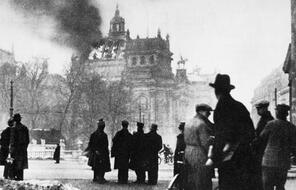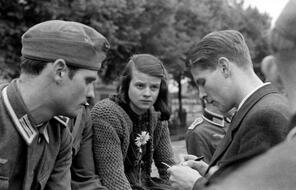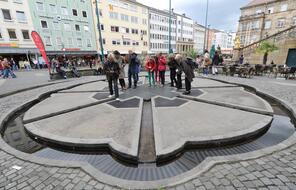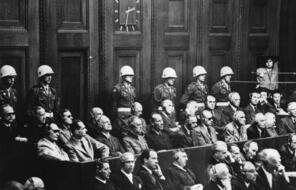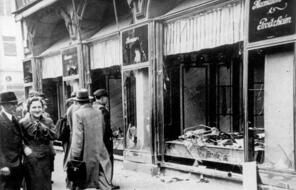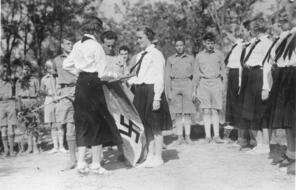An Agreement with the Catholic Church
Subject
- History
Language
English — USUpdated
In 1933, almost 40% of Germany’s population was Roman Catholic. As a minority in a country with a Protestant majority, Catholics had always felt vulnerable to accusations that they were not “true Germans” because of suspicions that they “took orders from Rome.” Over the years, they had protected their rights by organizing and supporting the Catholic Center Party. Now, as the Nazis were outlawing opposing political parties (see reading, Outlawing the Opposition), Catholics had to decide whether to continue to support the party.
Church leaders and clergy held a range of opinions about National Socialism. Some Catholic leaders welcomed Hitler’s call to “overcome the un-Germanic spirit” and feared that “atheistic communism” was more of a threat to the Catholic Church than the Nazis were. Others opposed the Nazis. According to historian Doris Bergen, “Many German Catholic clergy were initially suspicious of Nazism. They saw Nazi ideas as anti-Christian, especially the emphasis on race and blood and the obvious disrespect for human life . . . some priests had refused to administer the sacrament of communion to church members in Stormtrooper or SS uniforms." 1 Some who opposed the Nazis also urged great caution; they were fearful of attacks on priests and nuns. That concern prompted officials of the Vatican to discuss with Hitler the possibility of an agreement: the Church would pledge to abstain from political activity in Germany in exchange for the Reich’s promise not to persecute the Catholic Church and its members.
As word of these talks spread, Edith Stein wrote an urgent letter to the pope. Stein, born a Jew, had converted to Catholicism in 1922 and had become a nun and a respected Catholic educator. In her letter, she argued:
Everything that happened [in Germany] and continues to happen on a daily basis originates with a government that calls itself “Christian.” For weeks not only Jews but also thousands of fearful Catholics in Germany, and, I believe, all over the world have been waiting and hoping for the Church of Christ [the Roman Catholic Church] to raise its voice to put a stop to this abuse of Christ’s name. Is not this idolization of race and governmental power which is being pounded into the public consciousness by the radio open heresy? . . . Is not all this diametrically opposed to the conduct of our Lord and Savior, who, even on the cross, still prayed for his persecutors? 2
Pope Pius XI did not respond to Edith Stein, nor did his successor, Cardinal Pacelli, who became Pope Pius XII in 1939. As for the Nazis, they considered her a Jew despite her conversion to Christianity; she was eventually murdered in a death camp as part of the Holocaust.
In July 1933, Hitler and Pope Pius XI signed a concordat, or treaty. Historian Fritz Stern explains:
On the face of it, the Vatican had scored a great triumph. No government under Weimar had been willing to sign such a concordat, which would recognize the principal rights of the church—rights that presumably would render it immune from the kind of persecution it had suffered [in the past]. By the terms of the concordat the church renounced all political activities and in turn the state guaranteed the right to free worship, to circulate pastoral epistles, to maintain Catholic schools and property. The Vatican had reason to be satisfied: Catholic rights had been put on a new basis and at the same time a regime had been strengthened that seemed to correspond to the Vatican’s sense that Mussolini and Hitler were indispensable bulwarks against Bolshevism.
Hitler had even more reason to be satisfied. The concordat was his first international agreement, and it vastly enhanced his respectability in Germany and abroad. A great moral authority had trusted his word. But did the Vatican . . . really believe that National Socialism would abide by the concordat, was there really much likelihood that the regime would leave untouched a rival organization with its own dogmas and with such sweeping power over education? 3
In the months and years after the concordat was signed, the Nazis regularly violated the agreement by shutting down some Catholic organizations, confiscating church property, interfering with Catholic newspapers, and imprisoning or murdering clergy and other Church leaders. But the pope did not openly criticize the Nazis until 1937. By then it was too late. Roman Catholic opposition at this point was limited to isolated individuals who could easily be removed from their positions and lacked the support of their Church. According to Bergen: “The Concordat pulled the rug out from under potential Catholic opposition in Germany. How could parish priests criticize a chancellor who had been recognized by their pope?" 4
Connection Questions
- A concordat is a formal agreement or pact. It comes from the Latin word meaning “harmony.” What did the Catholic Church hope to gain from the concordat it signed with Germany? What compromises did the pope make?
- What did Hitler hope to gain? What compromises did he make? What effect did the concordat have on opposition to the Nazis within Germany? What effect did it have on the way other nations perceived the Nazi government?
- The Catholic Church kept its side of the bargain. What did the Church do when Hitler broke his promises? What other options did it have? What were the short-term consequences of those options? What were the long-term consequences?
- 1Doris L. Bergen, War and Genocide: A Concise History of the Holocaust (Lanham, MD: Rowman & Littlefield, 2003), 68. Reproduced by permission from Rowman & Littlefield Publishing Group.
- 2“Letter of Saint Edith Stein to Pope Pius XI in 1933,” Carmelite Nuns of Baltimore, February 23, 2003, accessed March 24, 2016.
- 3Fritz Stern, Dreams and Delusions: The Drama of German History (New Haven: Yale University Press, 1999), 169.
- 4Doris L. Bergen, War and Genocide: A Concise History of the Holocaust (Lanham, MD: Rowman & Littlefield, 2003), 68.
How to Cite This Reading
Facing History & Ourselves, “An Agreement with the Catholic Church”, last updated August 2, 2016.


